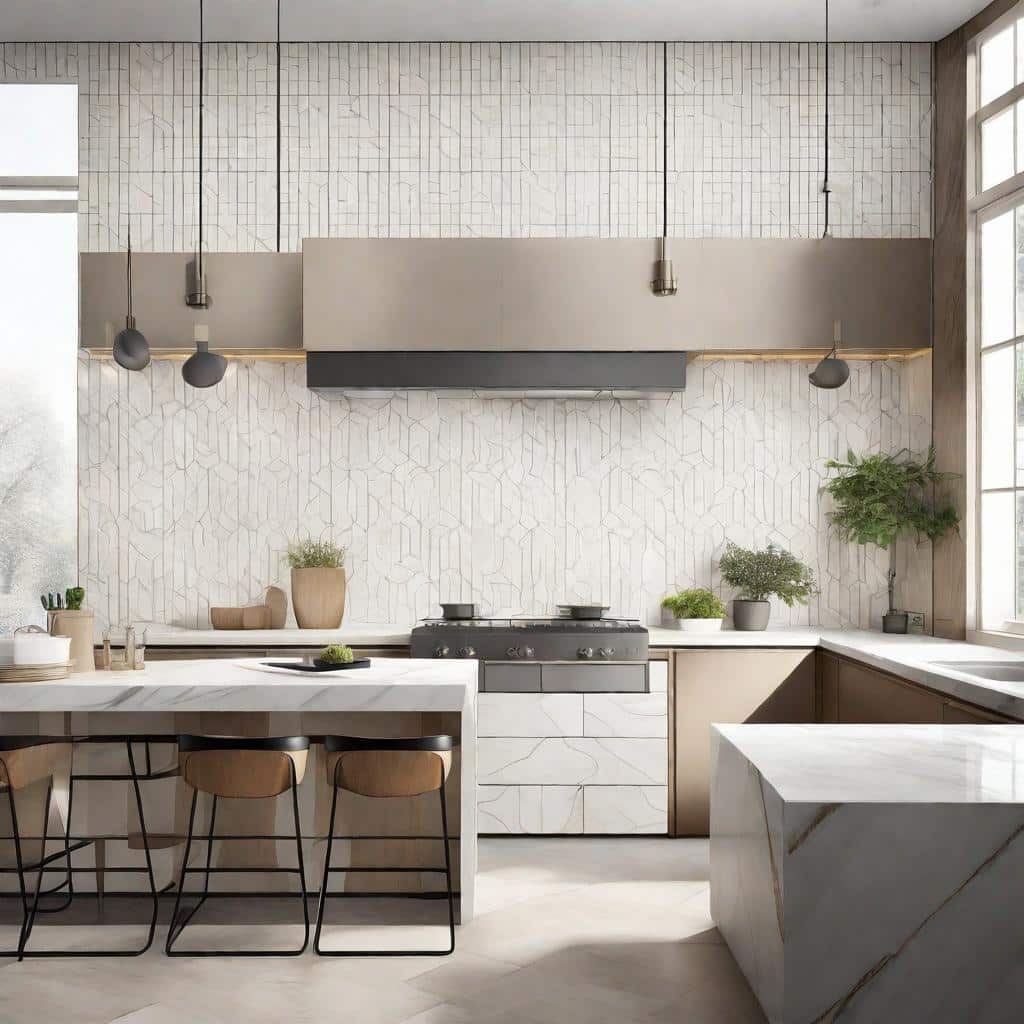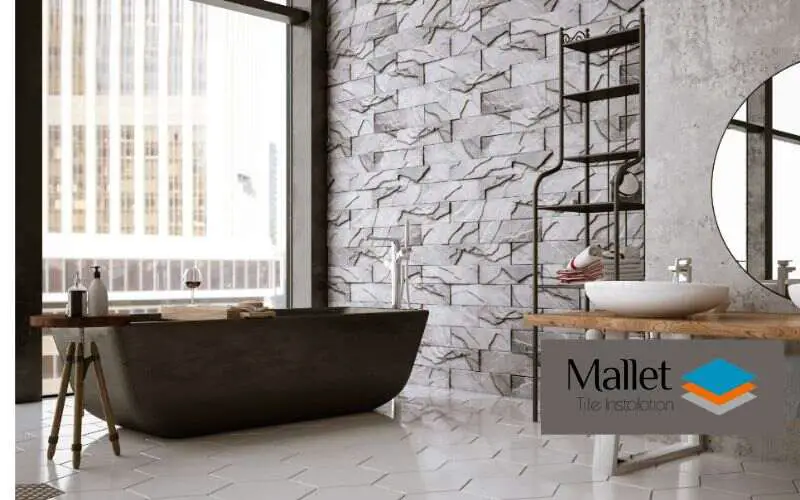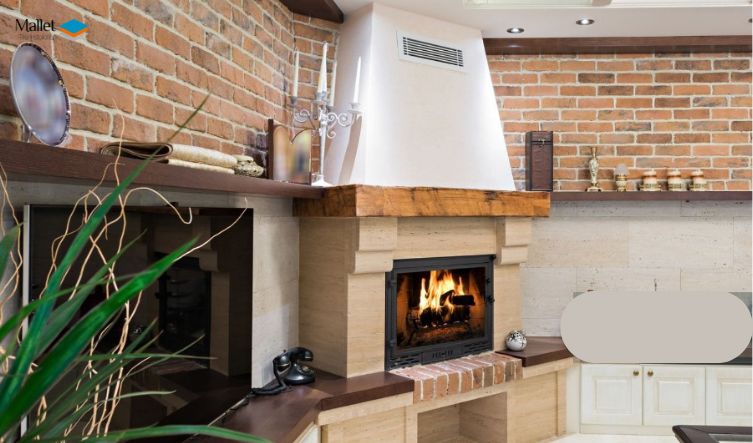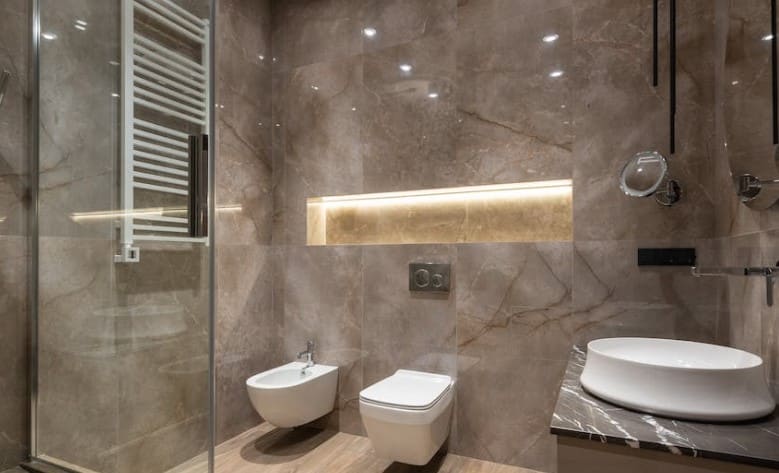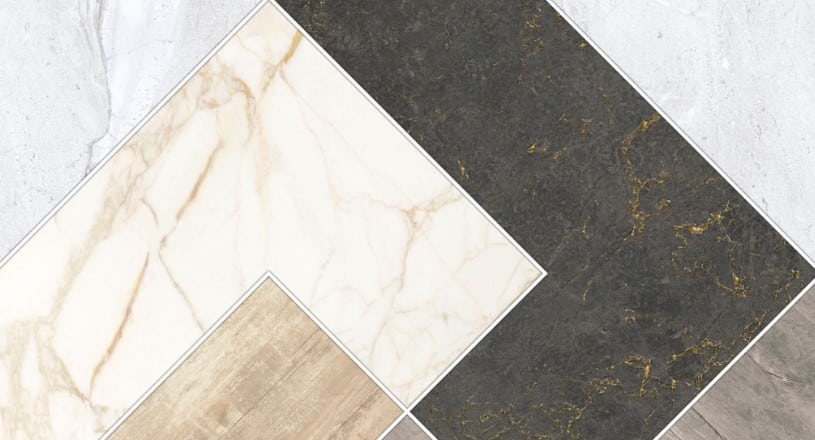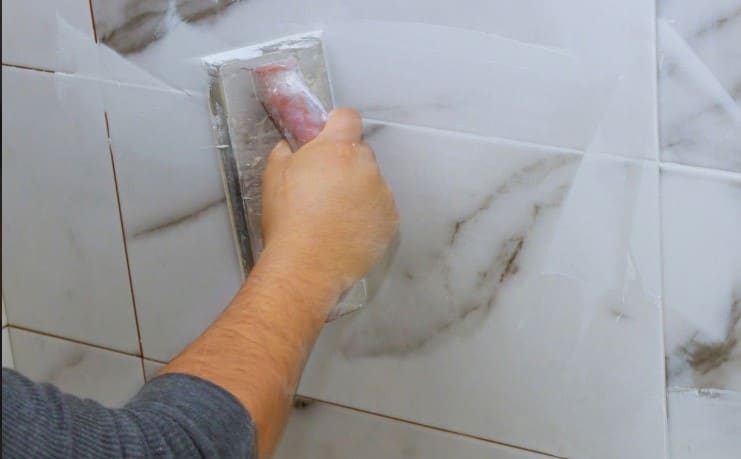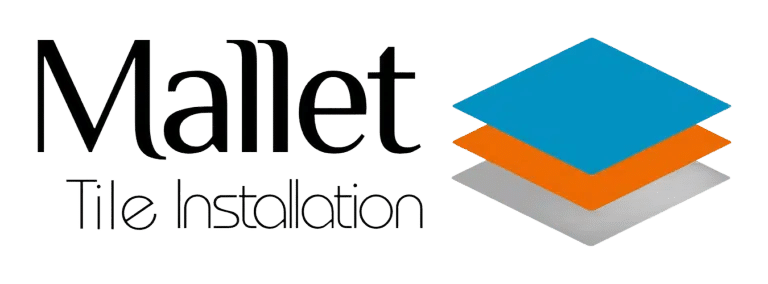Small spaces hold a unique challenge and charm when it comes to decorating. With the right touches, these areas can feel cozy, intimate, and surprisingly spacious. One often overlooked element in the quest for more room is the selection of tile. Whether it’s the bathroom, kitchen, or a small entryway, the right tile can transform your perception of space. We’ll walk you through how color, size, pattern, and finish can play pivotal roles. Let’s dive into the world of tiles and unveil some tricks to make your perfect tile for small spaces look and feel bigger.
Understanding the Power of Perception
Tiles do more than cover surfaces; they shape our perception of space. Here’s how:
How Tile Can Influence Spatial Perception
- The Role of Color in Perception: Light hues are infamous for making spaces appear larger and airier. They reflect more light, enhancing the sense of space.
- The Impact of Size and Pattern: Larger tiles mean fewer grout lines and a more unified look across your floor or wall, expanding the room visually.
- The Effect of Texture and Finish: A glossy finish can reflect light, adding depth and openness to your room, while matte tiles offer a subtle, soothing elegance.
Psychological Effects of Space-enhancing Tiles
- Creating a Relaxing Environment: Neutral and cool tones bring a sense of calm and openness.
- The Illusion of a Larger Area: Bright and reflective surfaces trick the eye into seeing a more expansive space.
- Enhancing Natural Light: The right tile can boost the natural light in your room, making it feel wider and more welcoming.
Selecting the Ideal Color and Finish
The right hue and shine can make all the difference.
Light vs. Dark Colors
- Benefits of Light Colors for Small Spaces: They make the room feel fresh and open.
- When to Opt for Dark Tones: Use dark tones for accents or if you desire a cozy, intimate vibe.
- Combining Colors for Depth and Contrast: A pop of color or a dark accent wall can add depth without closing in the space.
Glossy vs. Matte Finishes
- Reflecting Light with Glossy Tiles: These tiles can bounce light around a room, visually expanding the area.
- The Subtle Elegance of Matte Tiles: For a softer look that absorbs light, matte is the way to go.
- Matching the Finish to Your Space’s Lighting: Consider the natural and artificial light your room gets when choosing your tile’s finish.
The Impact of Grout Color
- Creating a Seamless Look with Matching Grout: This can visually expand your space.
- Using Contrasting Grout for a Bold Statement: Opt for this if you wish to add drama or define the tiles distinctly.
- How Grout Color Affects Tile Dimension Perception: Lighter grout can enhance the feeling of spaciousness, especially with larger tiles.
Size and Pattern Matter
The dimensions and designs of your tiles can magically alter your room’s proportions.
The Magic of Large-format Tiles
- Fewer Grout Lines for a Unified Look: This simple trick can make your room appear larger.
- Maximizing Perceived Floor Area: Bigger tiles mean less visual interruption, which makes the floor seem more expansive.
- Installation Considerations: Keep in mind that large format tiles require a perfectly level substrate.
The Strategic Use of Patterns
- Vertical Patterns to Heighten Spaces: They draw the eye upward, making ceilings seem taller.
- Horizontal Patterns to Widen Areas: A classic trick to make narrow spaces seem broader.
- Clever Uses of Mosaic and Intricate Designs: These can act as focal points, drawing attention and creating a sense of depth.
Tile Orientation and Its Effects
- The Classic Diagonal Trick: Laying tiles diagonally creates the illusion of a wider space.
- Straight Lay vs. Staggered Patterns: Each has its charm and effect on spatial perception.
- Choosing the Right Orientation for Your Room: Consider the room’s function and shape when deciding on tile layout.
Beyond the Floor: Comprehensive Tile Design
Tiles aren’t just for floors; walls matter too!
Tiling Walls and Backsplashes
- Continuity Between Floor and Wall Tiles: This can visually expand your space enormously.
- The Advantages of Extending Tile Beyond the Floor: It creates an uninterrupted flow, making the room appear larger.
- Decorative Tile Walls as Focal Points: A beautiful way to add personality and the illusion of depth.
Unique Applications and Creative Ideas
- Tile Rugs and Inlays for Visual Interest: These can break up the monotony and add charm.
- Mixing Textures and Materials: A blend of textures can enhance the sensory perception of space.
- Incorporating Technology and Modern Materials: Consider tiles with smart tech or innovative designs for a modern touch.
Cohesion and Contrast in Design
- Balancing Uniformity and Variety: Find the sweet spot between monotonous and chaotic.
- Picking Themes and Motifs: A cohesive theme can unify a small space.
- The Importance of Transition Strips and Edging: Neat transitions can visually expand the area.
Maintenance and Longevity
Choosing the right tiles means less hassle in the long run.
Selecting Tiles for Ease of Cleaning
- The Best Materials for Low-maintenance Tiles: Ceramic and porcelain are both excellent choices.
- Tips for Keeping Grout Clean and Bright: Seal it properly, and opt for darker colors in high-traffic areas.
- Strategies for Scratch and Wear Prevention: Choose harder tiles and place mats in strategic areas.
Durability Considerations
- High-traffic Areas and Tile Hardness: The PEI rating helps you choose tile that can withstand wear and tear.
- Water Resistance in Bathroom and Kitchen Tiles: Essential for preventing water damage and mold growth.
- Long-term Aesthetics and Timeless Design Choices: Opt for classic designs that won’t date your space.
Environmental Impact and Sustainability
- Eco-friendly Tile Materials and Certifications: Look for tiles made from recycled materials or those that have a low environmental impact.
- Recycling and Repurposing Old Tiles: Get creative with old tiles, from coasters to garden paths.
- Energy-efficient Production Methods: Support companies that prioritize sustainability in their production processes.
Summary
The secret to creating spaciousness in your small spaces isn’t a secret at all—it’s all in your choice of tiles. With strategic use of color, size, pattern, and finish, you can transform cramped rooms into cozy nooks that feel open and inviting. Remember, the goal is to enhance perception, merge functionality with style, and make the most of every inch. So, take these insights, get creative with your tile selections, and watch your small spaces expand before your eyes.
Frequently Asked Questions (FAQs)
What tile color makes a room look bigger?
Light colors, especially whites and creams, tend to make rooms look bigger by reflecting light and creating a sense of openness.
How do you tile a small bathroom to make it look bigger?
Use large-format tiles with few grout lines, and light colors, and consider extending the same tile from the floor to the walls for uninterrupted continuity.
Are large tiles bad for small bathrooms?
Contrary to popular belief, large tiles can make small bathrooms look bigger by reducing visual fragmentation.
Can the right tile improve a room’s lighting?
Absolutely! Glossy or lighter-colored tiles can reflect more light, enhancing the overall brightness of the room.
How important is grout color in small spaces?
Very important. Matching the grout color to the tile can create a seamless look, making the space appear larger while contrasting grout can define the tiles and add depth.

